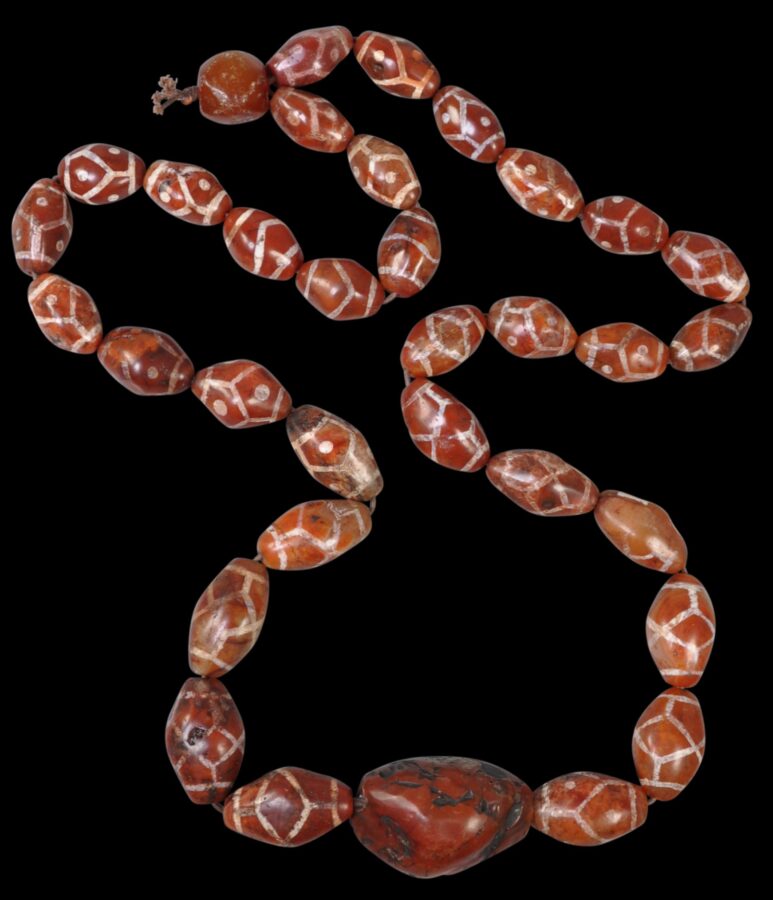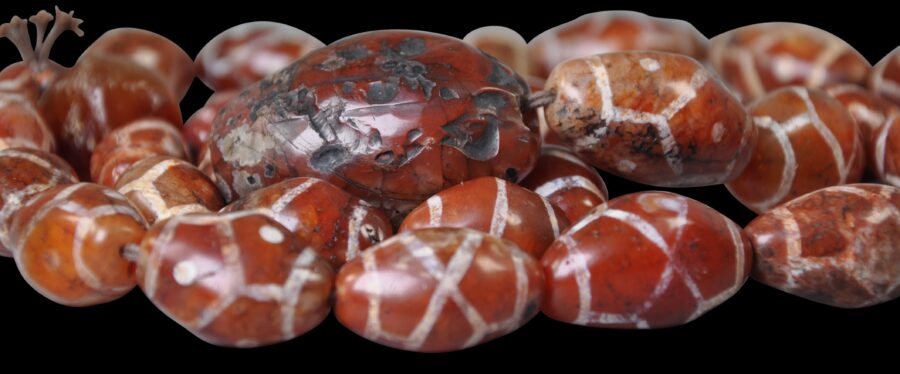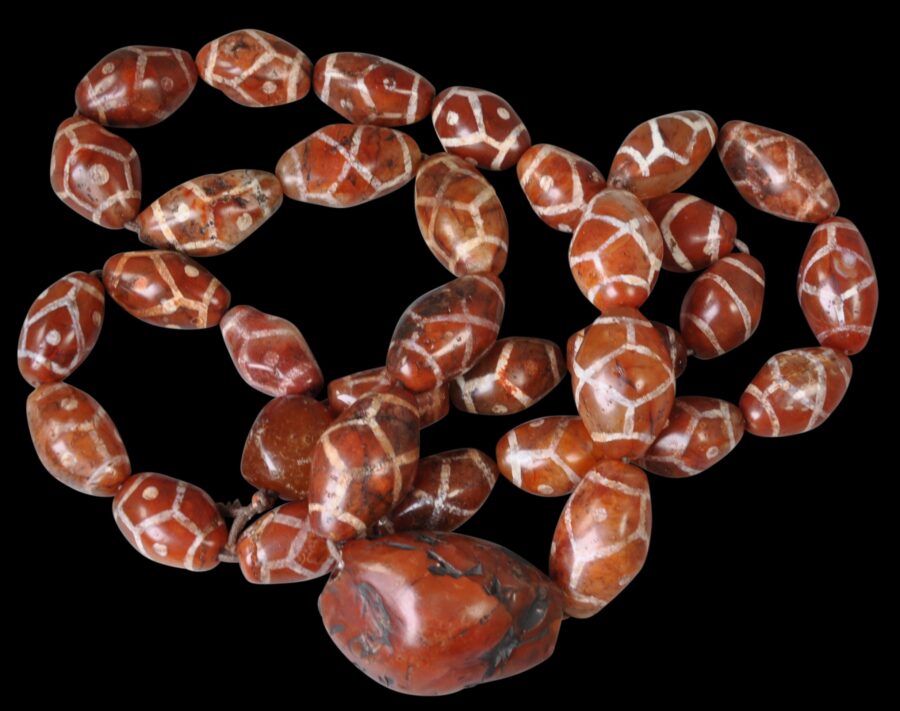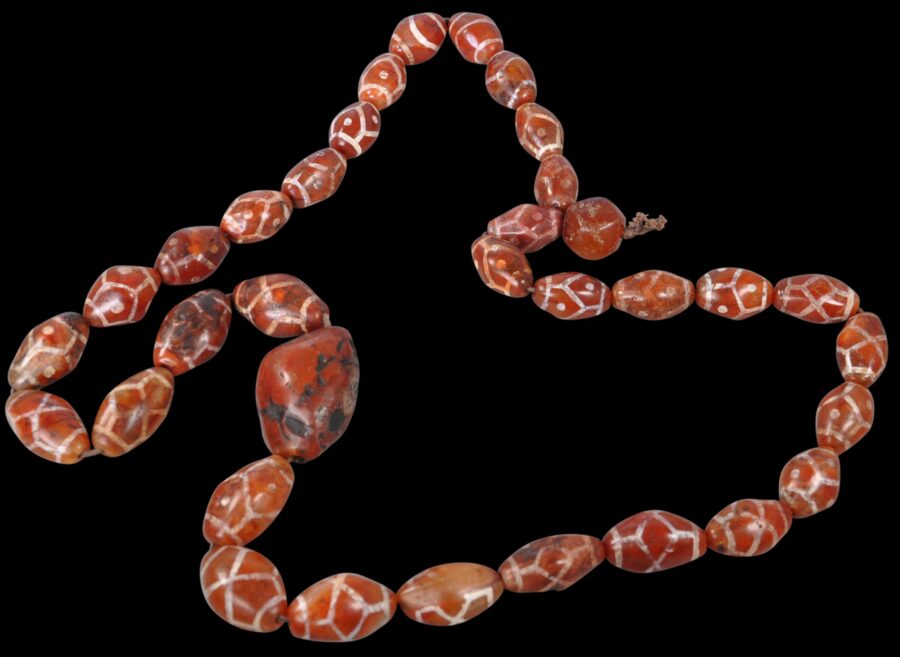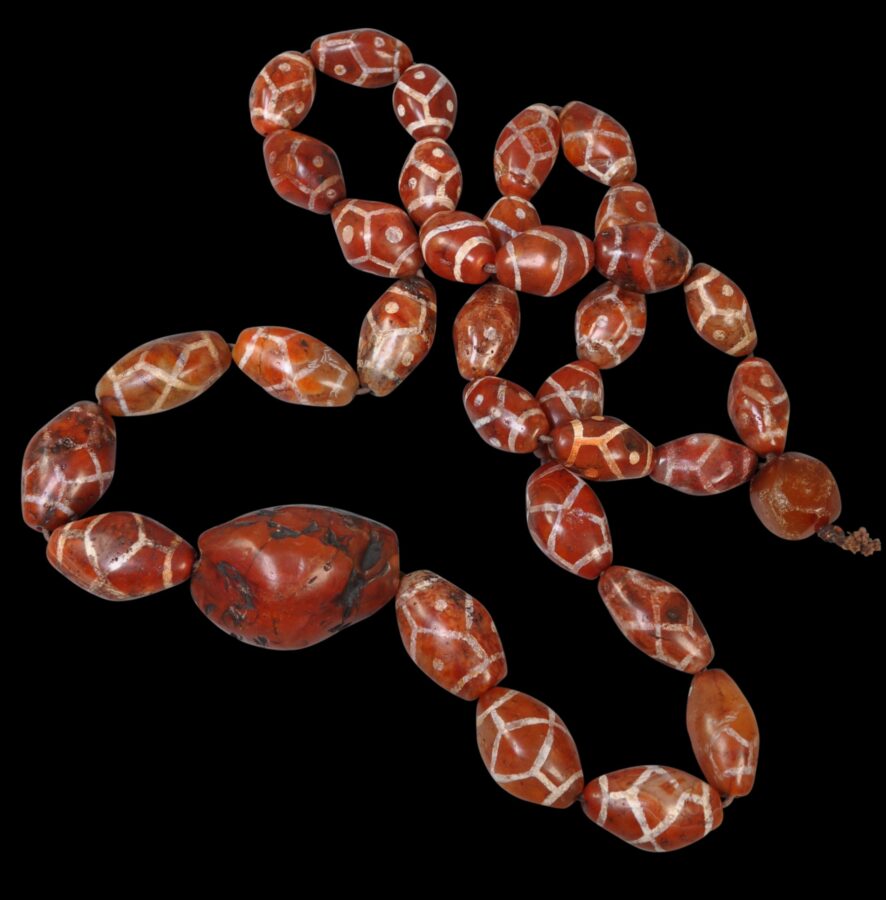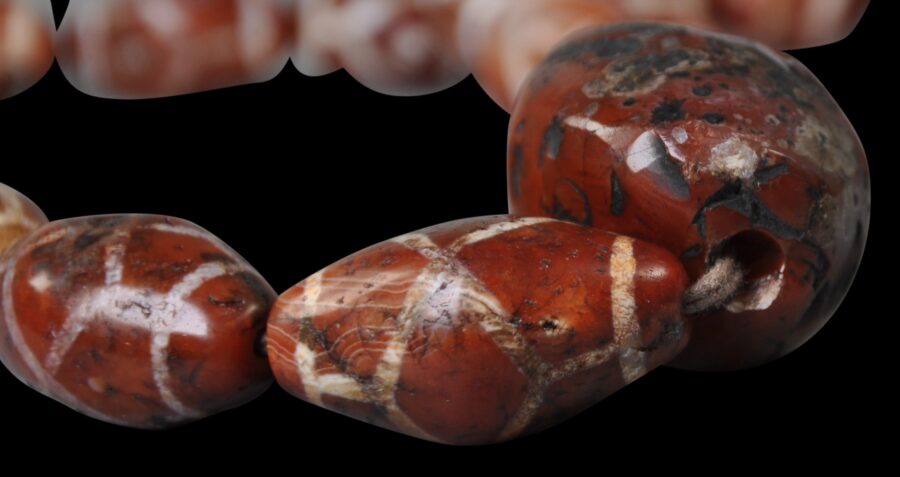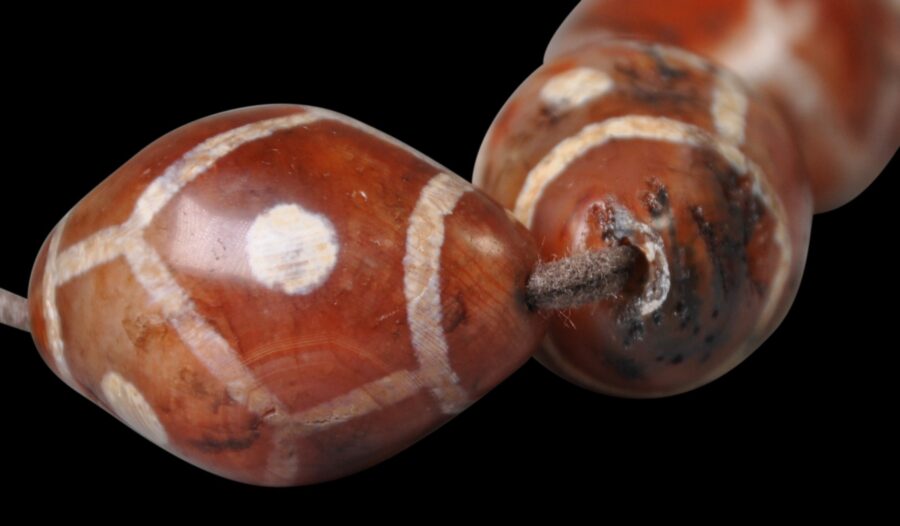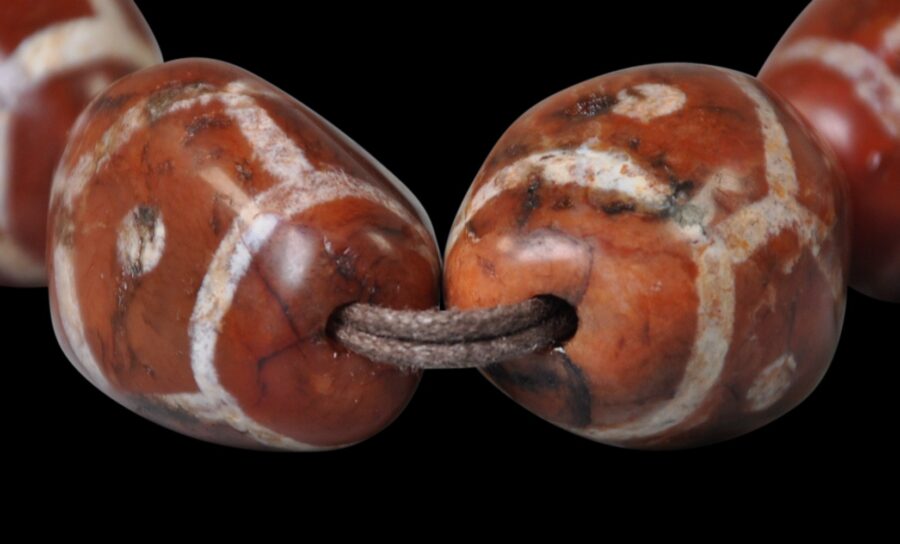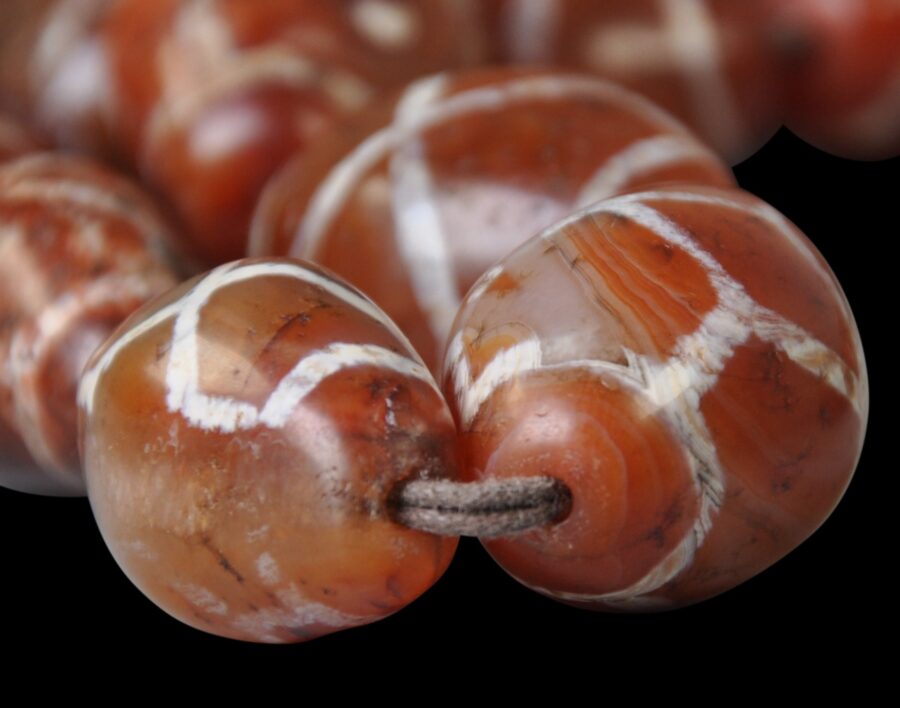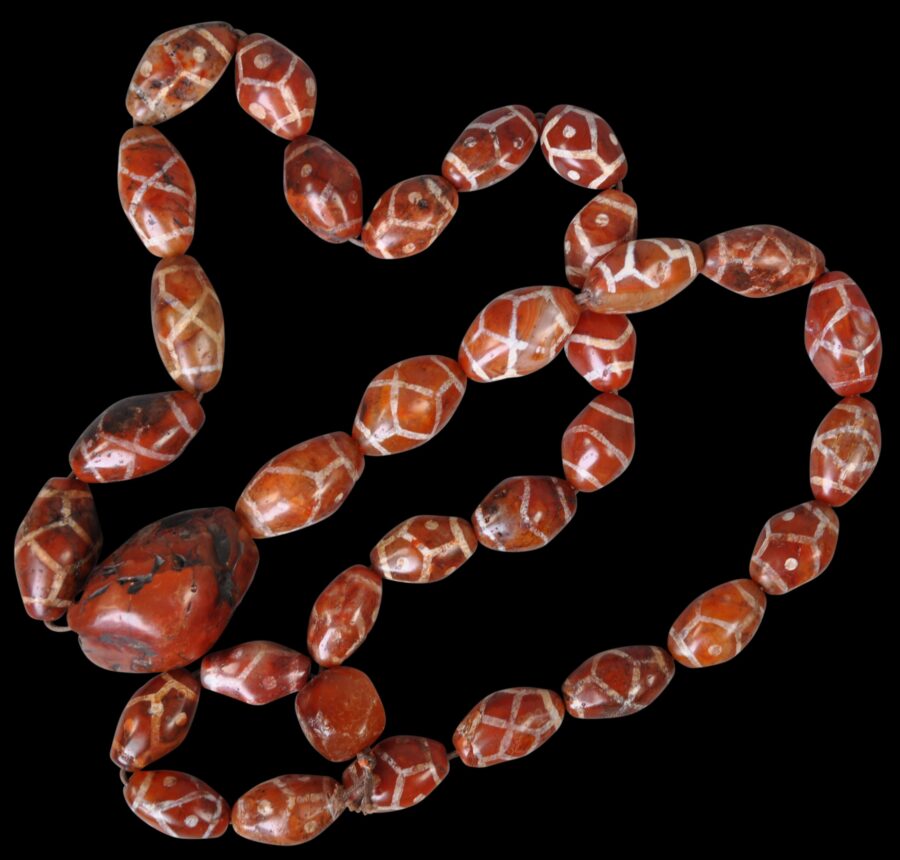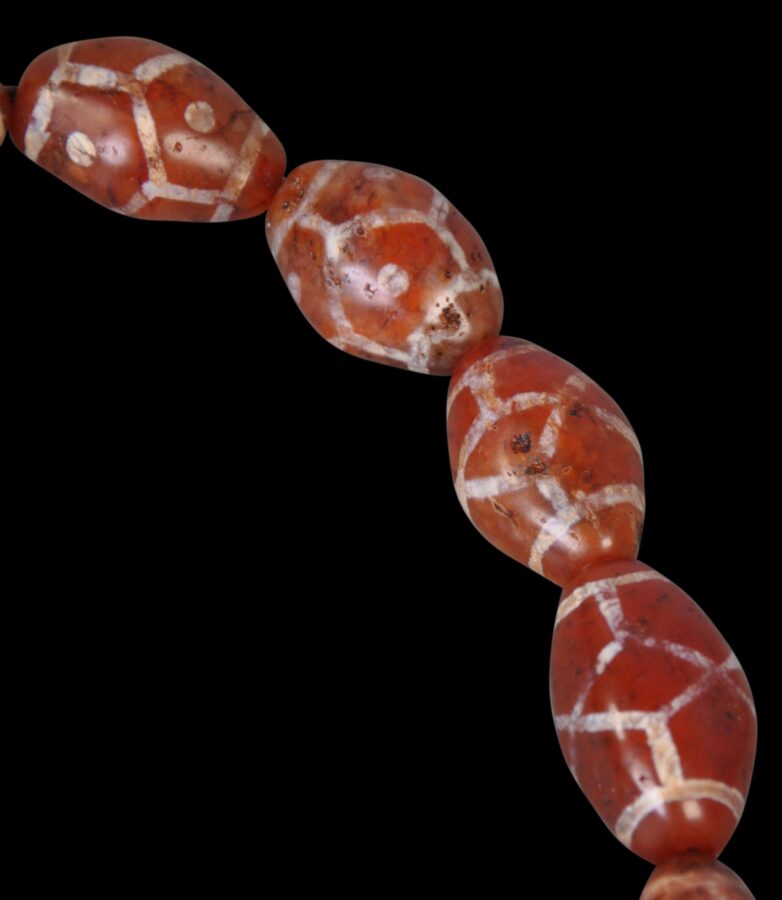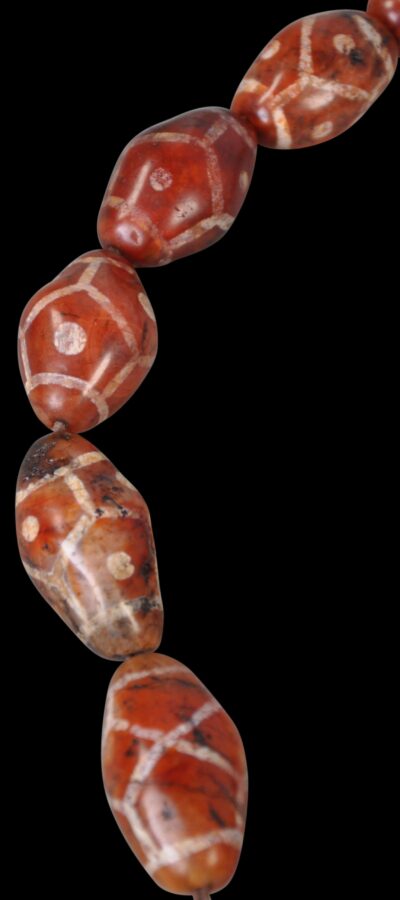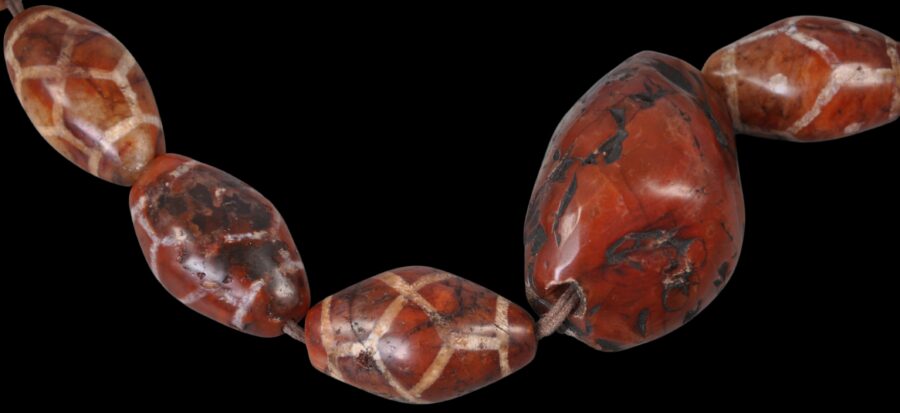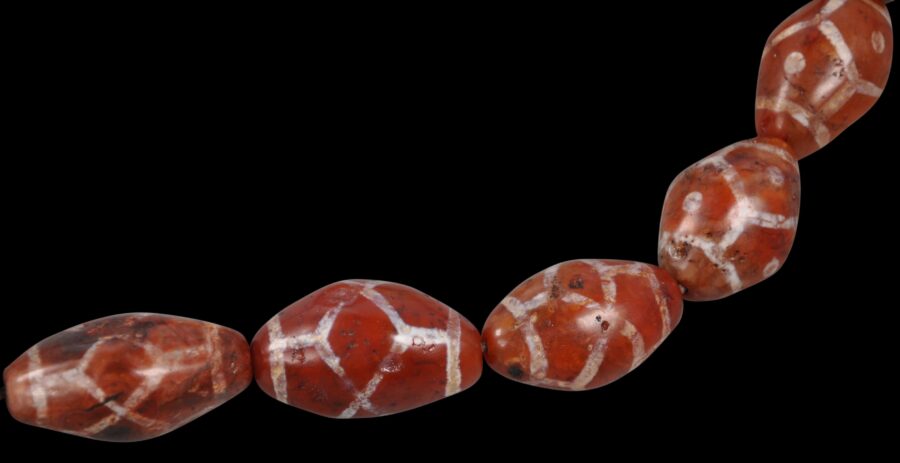This extraordinary strand of ancient beads known in Tibet as phum dzi beads comprises 32 phum dzi, plus one large oval pema raka bead, and a carnelian ‘cornerless’ cube bead. It is remarkable for its great age, size, quantity of beads, and their quality.
Phum dzi beads are regarded by Tibetans and Ladakh people as a sub-group of the much-valued protective dzi beads which typically are of black agate but which similarly have etched designs. The examples here have the ‘net’ pattern associated with ancient phum dzi beads. It is believed that these patterns are copying beads from the Roman period (Allen, 2002.) Several beads also have small white dots and these probably served as protective ‘eyes’.
Elsewhere phum dzi beads are known as Pyu, or ‘military’ beads. The actual origins are obscure. Etched carnelian beads were first produced in the Indus Valley around the middle of the third millennium BC. Most probably the examples here were produced near the Burma border during the Pyu period.
Phum dzi beads were made from carnelian. They were hand carved and polished. They were then treated so that they had white designs on their surface. Heat and sodium carbonate were used to make the designs on the bead surface. The process did not etch the beads but rather but caused micro fractures of the carnelian so that the surface appears white. It was a technique probably first used by bead makers in the Indus Valley. Decorating carnelian beads in this way transformed them into highly valued trade goods, and their spread helped to disseminate the bead decorating technique to other cultures such as bead makers in Kachin State in Burma. Those cultures that did not develop the technique relied on imported beads. The Tibetans are an example.
The strand here is exceptional.
References
Allen, J., ‘Tibetan zi beads’, in Arts of Asia, July-August 2002.
Sherr Dubin, L., The Worldwide History of Beads, Thames & Hudson, 2009.


